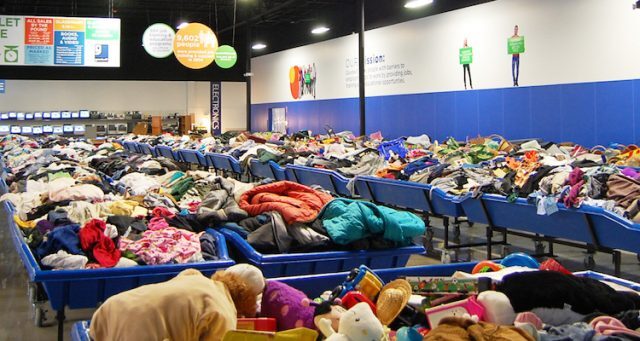The idea of being able to buy designer clothes for a fraction of their original price through thrifting seems like the perfect reason to start thrifting, but there are so many other perks. The sustainability, ability to choose clothes for cheaper, and accessibility make it appealing to many across the world, especially those at schools and colleges, according to “The Sustainability of Thrifting: How Secondhand Shopping Reduces Your Environmental Impact” from Thrift City.
Students choose to thrift mainly because of how inexpensive it is, but there are many other reasons, according to “Thrifting gains popularity as it becomes a part of college culture” from Oklahoma University (OU) Daily.
There are multiple ways to thrift: the first way, which is the most popular, is buying second-hand clothes off racks; the second way is via online sites like Thredup and Depop; and lastly: the cheapest option are the bins (in separate stores from racks), where clothes are sold by the pound, according to “Digging for Buried Treasure — What You Need to Know Before Thrifting at the Bins” on greenmatters.
However, sites like Thredup and Depop rip off the sellers and buyers because of the fees these sites charge sellers, senior Faye Balquiedra said. The sellers only make a percentage of the price they sell their clothes for, he added. “Definitely don’t try on clothes at Goodwill,” Balquiedra said. “And wear gloves at the bins.”
The stigma surrounding thrifting is that it is unsanitary and unsafe. However, no matter where one buys their clothes, they should always wash their clothes beforehand, so thrifting isn’t that unsanitary, junior Namit Jain said. For the best thrift experiences, Jain said that going to richer neighborhoods always gets him the best clothes.
“You can usually find good clothes (in rich neighborhoods) because rich people tend to throw away…better brands like Nike,” Jain said. Palo Alto, Mountain View, and Cupertino’s neighborhoods are the best neighborhoods to thrift in because of the rich demographic in those areas, Jain added. At Goodwills he’s been to, Jain spends one hour at each on average, he said. “I can find five to ten pieces of clothing, usually around fifty, sixty dollars; it’s not that expensive,” Jain said.
I thrifted for the first time on Thredup and spent over $150 on twenty pieces of clothing, which compared to current prices, is incredibly cheap. I still wear most of these clothes on a day-to-day basis because the secondhand quality is so good. Thrifting is so much more than dirty clothes, long hours of searching racks and bins, and lack of warranty. The wide range in varieties of clothing styles and the ability to find your personal style make thrifting a unique experience for anyone willing to try it.

